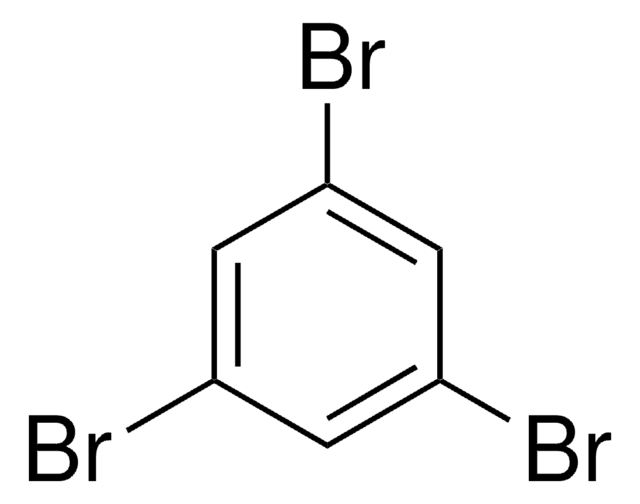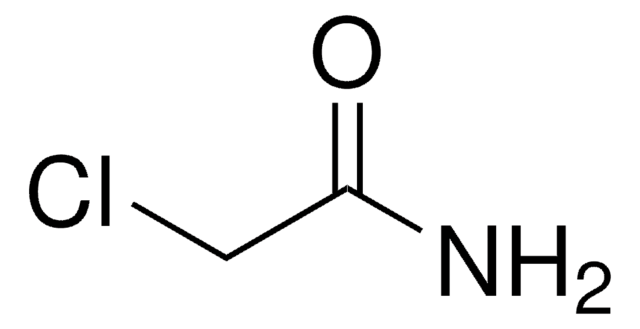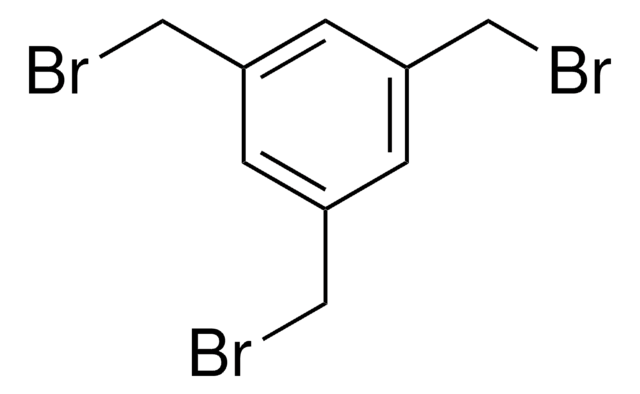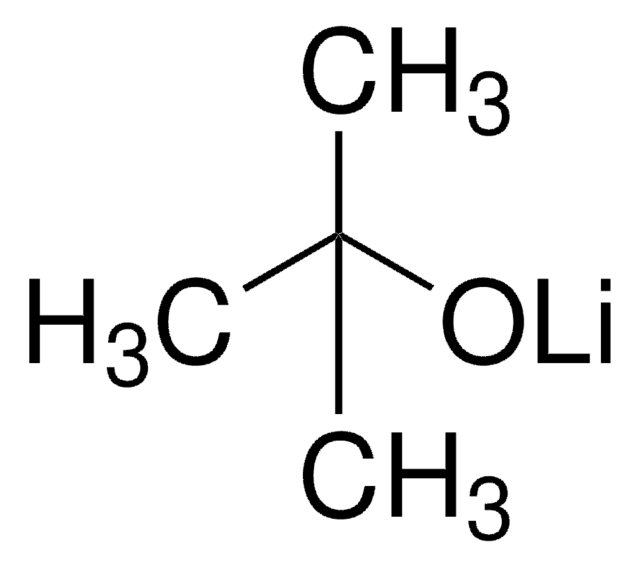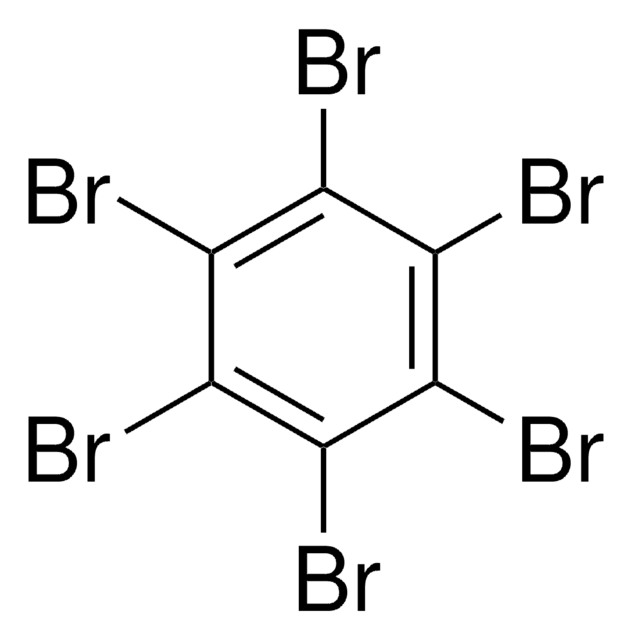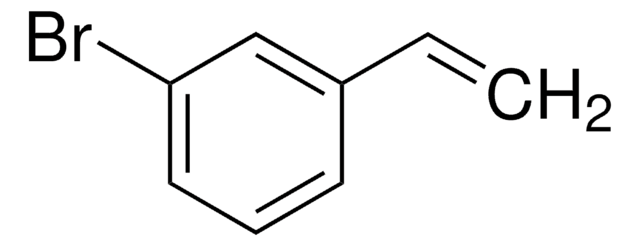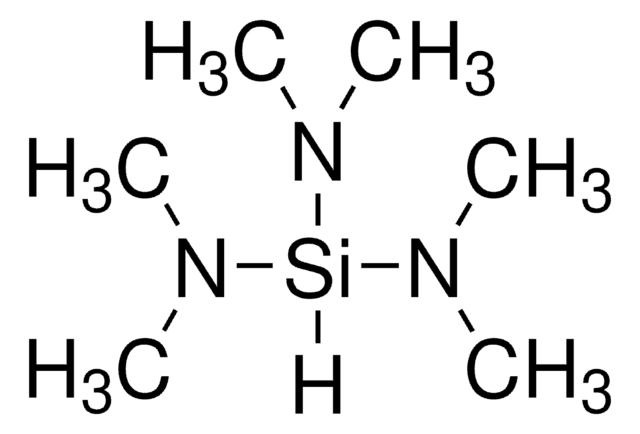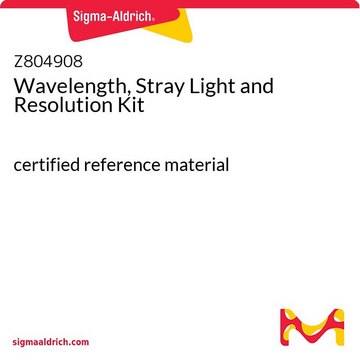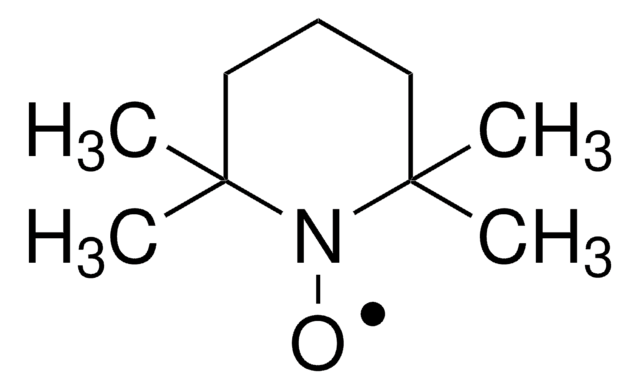132756
1,2,4-Tribromobenzene
95%
Se connecterpour consulter vos tarifs contractuels et ceux de votre entreprise/organisme
About This Item
Formule empirique (notation de Hill):
C6H3Br3
Numéro CAS:
Poids moléculaire :
314.80
Numéro CE :
Numéro MDL:
Code UNSPSC :
12352100
ID de substance PubChem :
Nomenclature NACRES :
NA.22
Produits recommandés
Niveau de qualité
Essai
95%
Forme
solid
Pf
41-43 °C (lit.)
Groupe fonctionnel
bromo
Chaîne SMILES
Brc1ccc(Br)c(Br)c1
InChI
1S/C6H3Br3/c7-4-1-2-5(8)6(9)3-4/h1-3H
Clé InChI
FWAJPSIPOULHHH-UHFFFAOYSA-N
Catégories apparentées
Description générale
1,2,4-tribromobenzene on photochemical dehalogenation in open-air solutions of acetonitrile yields 1,4-dibromobenzene, 1,3-dibromobenzene and 1,2-dibromobenzene.
Application
1,2,4-tribromobenzene was used in the synthesis of hyperbranched poly(p-phenylene ethynylenes). It was used as cross-linking reagent during Pd-catalyzed cross-coupling of 2,5-diiodo-4-[(2-ethylhexyl)oxy]methoxybenzene and 1,4-diethynyl-2,5-bis-(octyloxy)benzene.
Mention d'avertissement
Warning
Mentions de danger
Conseils de prudence
Classification des risques
Aquatic Acute 1 - Aquatic Chronic 1 - Eye Irrit. 2 - Skin Irrit. 2 - STOT SE 3
Organes cibles
Respiratory system
Code de la classe de stockage
11 - Combustible Solids
Classe de danger pour l'eau (WGK)
WGK 3
Point d'éclair (°F)
235.4 °F - closed cup
Point d'éclair (°C)
113 °C - closed cup
Équipement de protection individuelle
dust mask type N95 (US), Eyeshields, Gloves
Faites votre choix parmi les versions les plus récentes :
Déjà en possession de ce produit ?
Retrouvez la documentation relative aux produits que vous avez récemment achetés dans la Bibliothèque de documents.
P K Freeman et al.
Journal of chemical technology and biotechnology (Oxford, Oxfordshire : 1986), 72(1), 45-49 (1998-06-17)
The photochemical dehalogenation of 1,2,4-tribromobenzene, 1,2,3,5-tetrabromobenzene and pentachlorobenzene in open-air solutions of acetonitrile using natural and artificial sunlight as the irradiation source has been investigated. The regiochemistry of mono-dehalogenation has been determined for 1,2,4-tribromobenzene and 1,2,3,5-tetrabromobenzene. Pentachlorobenzene did not react.
Synthesis and characterization of cross-linked conjugated polymer milli-, micro-, and nanoparticles.
Eric Hittinger et al.
Angewandte Chemie (International ed. in English), 43(14), 1808-1811 (2004-04-01)
Hyperbranched Poly (p-phenylene ethynylene) s.
Mendez JD, et al.
Macromolecular Chemistry and Physics, 208(15), 1625-1636 (2007)
E N Smith et al.
Journal of toxicology and environmental health, 6(4), 737-749 (1980-07-01)
1,2,4-Trichlorobenzene (TCB) and 1,2,4-tribromobenzene (TBB) were administered for 7 d to rats at a dose of 1 mmol/kg.d. The animals were sacrificed at various times to observe the decline in enzyme induction. Carbon 14-labeled TCB and TBB were administered and
Darol E Dodd et al.
International journal of toxicology, 31(3), 250-256 (2012-04-06)
Male Sprague-Dawley rats were exposed to 1,2,4-tribromobenzene (TBB) by gavage for 5 days, 2, 4, and 13 weeks at 0, 2.5, 5, 10, 25, or 75 mg/kg per d. There were no TBB exposure-related clinical signs of toxicity or changes
Notre équipe de scientifiques dispose d'une expérience dans tous les secteurs de la recherche, notamment en sciences de la vie, science des matériaux, synthèse chimique, chromatographie, analyse et dans de nombreux autres domaines..
Contacter notre Service technique